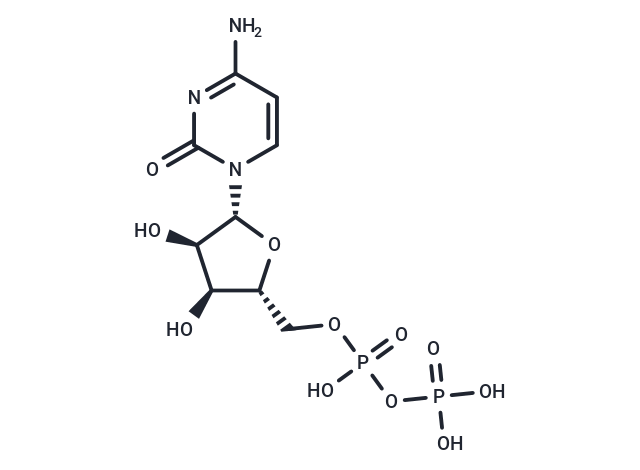Shopping Cart
- Remove All
 Your shopping cart is currently empty
Your shopping cart is currently empty

Cytidine 5′-diphosphat (5'-CDP) is synthesized from cytidine monophosphate (CMP) or uridine monophosphate (UMP) by the transfer of phosphoryl group, catalyzed by the enzyme uridylate kinase (UMPK).

| Pack Size | Price | Availability | Quantity |
|---|---|---|---|
| 5 mg | $50 | In Stock | |
| 10 mg | $75 | In Stock | |
| 25 mg | $128 | In Stock | |
| 50 mg | $192 | In Stock | |
| 100 mg | $287 | In Stock | |
| 200 mg | $431 | In Stock |
| Description | Cytidine 5′-diphosphat (5'-CDP) is synthesized from cytidine monophosphate (CMP) or uridine monophosphate (UMP) by the transfer of phosphoryl group, catalyzed by the enzyme uridylate kinase (UMPK). |
| Alias | Cytidine diphosphate, Cytidine coenzyme, Cytidine 5′-pyrophosphate, CDP, 5'-CDP |
| Molecular Weight | 403.18 |
| Formula | C9H15N3O11P2 |
| Cas No. | 63-38-7 |
| Smiles | Nc1ccn([C@@H]2O[C@H](COP(O)(=O)OP(O)(O)=O)[C@@H](O)[C@H]2O)c(=O)n1 |
| Relative Density. | 2.35g/cm3 |
| Storage | Powder: -20°C for 3 years | In solvent: -80°C for 1 year | Shipping with blue ice. |
| Solubility Information | DMSO: Slightly soluble |

Copyright © 2015-2025 TargetMol Chemicals Inc. All Rights Reserved.